Examples of Plain Weave Fabric – A Complete Guide
Plain weave fabric is one of the most fundamental and widely used weaving patterns in the textile industry. It’s known for its simplicity, durability, and versatility, making it a staple in the production of various fabrics. This weave consists of an over-and-under pattern, where the warp and weft threads interlace straightforwardly, creating a flat surface.
In this guide, we will explore what plain weave fabric is, why it’s so popular, and look at five notable examples commonly used in everyday textiles.
What is Plain Weave Fabric?
Plain weave is a basic weaving technique in which each thread crosses over and under another thread in a consistent manner. The structure features an equal number of threads running vertically (warp) and horizontally (weft), interwoven in an alternating pattern. This straightforward interlacing gives plain weave fabrics their characteristic flat and smooth texture.
Due to its balanced construction, plain weave fabric is known for its strength, durability, and versatility. It’s also relatively simple to manufacture, making it affordable for mass production in various textile applications. Whether it’s used for home textiles, fashion garments, or industrial materials, plain weave fabrics are crucial in countless industries.
Learn More from the post of What is Plain Weave Fabric?
5 Popular Examples of Plain Weave Fabric
Plain weave fabric isn’t a single material—it’s a method applied to various fibers. Here are five of the most common examples:
1. Cotton
Cotton is one of the most widely recognized fabrics that uses plain weave. Its natural fibers make it soft, breathable, and comfortable for everyday wear. Cotton plain weave fabrics are commonly used for shirts, sheets, and towels.
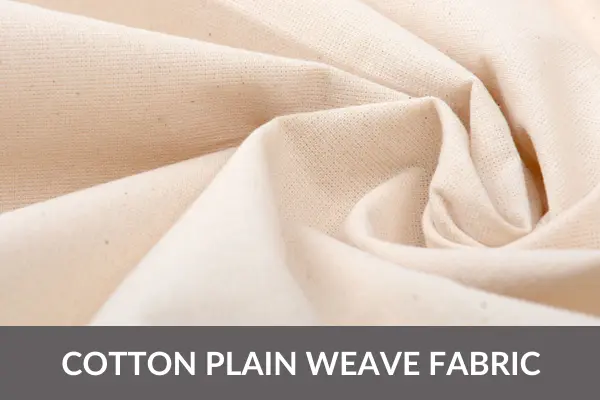
- Benefits: Lightweight, breathable, and easy to maintain.
- Applications: Everyday clothing, home textiles, medical linens.
2. Linen
Linen, derived from the flax plant, also uses the plain weave technique extensively. This fabric is known for its cooling properties, making it a popular choice in hot climates. Linen plain weave offers a slightly textured surface compared to cotton, but still maintains its lightweight and breathable qualities.

- Benefits: Cool to the touch, quick-drying, and eco-friendly.
- Applications: Summer garments, tablecloths, bed linens.
3. Muslin
Muslin is a finely-woven cotton fabric that is often used in the fashion industry for mockups and patterns. It is light, soft, and relatively inexpensive, making it ideal for testing garment designs. Muslin plain weave fabric can also be used for baby clothes and gauze-like textiles.
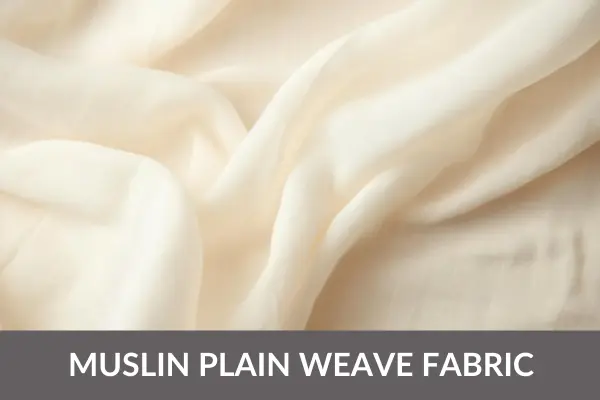
- Benefits: Soft, inexpensive, and breathable.
- Applications: Clothing prototypes, baby items, curtains.
4. Taffeta
Taffeta is a crisp, smooth fabric with a slight sheen that often uses a plain weave structure. It’s made from silk or synthetic fibers and is commonly used in evening wear and bridal gowns due to its luxurious finish. Despite being lightweight, plain weave taffeta is durable and retains its shape well.
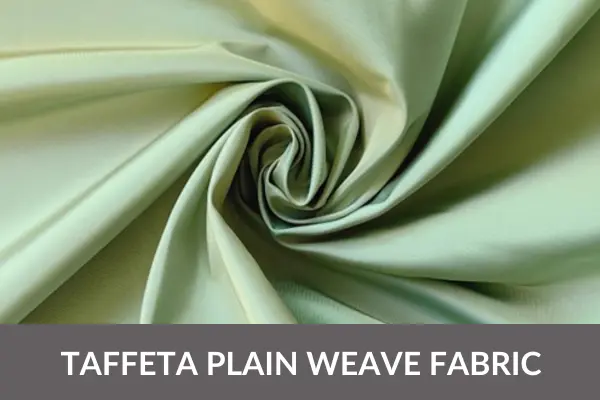
- Benefits: Crisp texture, formal appearance, smooth surface.
- Applications: Evening dresses, formal wear, wedding gowns.
5. Chiffon
Chiffon is another fabric that typically uses a plain weave structure, often made from silk or synthetic fibers. Chiffon is lightweight, sheer, and flowy, making it ideal for delicate, elegant garments like dresses, scarves, and blouses. Although it has a soft, airy feel, chiffon’s plain weave construction provides some durability.
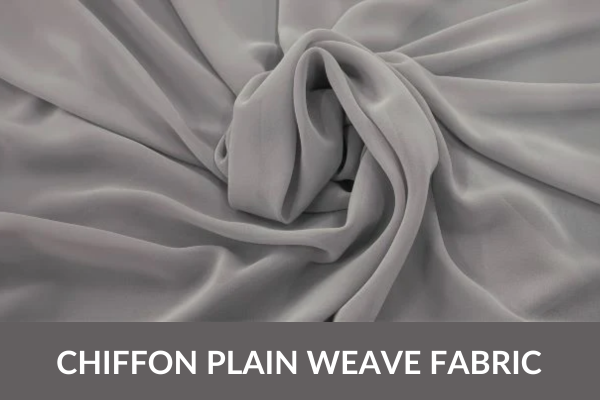
- Benefits: Sheer, lightweight, and flowing.
- Applications: Dresses, evening wear, scarves.
Benefits of Plain Weave Fabric
Plain weave fabric is highly regarded for its strength and simplicity. Its basic interlacing pattern ensures uniformity, which makes it an ideal choice for a wide range of applications. Some notable advantages of plain weave fabrics include:
- Durability: The over-and-under structure makes the fabric highly durable and resistant to wear and tear.
- Versatility: Plain weave can be applied to almost any fiber, making it a universal choice for textile manufacturers.
- Cost-Effectiveness: Due to its simple construction, plain weave fabrics are easier to produce, keeping costs low.
- Breathability: Many plain weave fabrics, especially cotton and linen, are breathable, which adds comfort for the wearer.
Common Uses of Plain Weave Fabric
Plain weave is used in numerous everyday textiles and industrial applications. Here are a few common uses:
- Clothing: Shirts, blouses, skirts, and trousers.
- Home Furnishings: Bedding, upholstery, curtains, and tablecloths.
- Medical Textiles: Gauze, bandages, and surgical gowns.
- Industrial Uses: Filters, canvas, and tarpaulins.
Conclusion
Plain weave fabric remains a staple in the textile industry due to its simple yet highly effective design. Whether it’s cotton, linen, muslin, or more luxurious options like taffeta and chiffon, the plain weave structure provides strength, durability, and versatility. This fabric type is fundamental to everything from everyday clothing to intricate evening wear, proving its wide-ranging utility across multiple sectors.
For anyone in the textile industry, understanding examples of plain weave fabric is essential for both manufacturers and designers. With its reliability and cost-effectiveness, plain weave will continue to be a go-to method for fabric production for years to come.
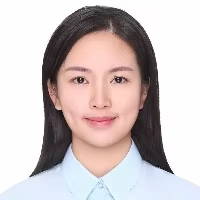
Hi, I am Belle Chan, the Manager of Liguotai Imp & Exp Co., Ltd. Established in 1996, our company is located in Shaoxing, Zhejiang, China, LIGUOTAI Company Ltd. Covers an area of 20000 square meters. It has an fixed asset of 3 million U. S. Dollars and 300 workers. Our material department has advanced textile equipments. Our company have a strong ability about making the new proudct. We have professional workers for weaving, printing and dying. The complete sales network, good quality and satisfying services have brought us notable achievement and also help us foster a fairly good and health company image. We mainly make saling fabric for top grade shirts and casual trousers as well as for fashion fabrics.

